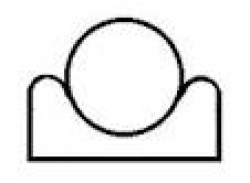Akhet

The Egyptian language word Akhet is both a hieroglyph and an Ancient Egyptian season.
The two uses for akhet:
* In ancient Egyptian, the place where the sun rises and sets; often translated as "horizon" or "mountain of light". It is included in names like "Akhet Khufu" (Ancient Egyptian name for the Great Pyramid) and Akhetaten. Betrò's book names the hieroglyph: 'Mountain with the Rising Sun', and the hieroglyph is used as an ideogram for "horizon". In ancient Egyptian religion, the Pylon mirrored the hieroglyph for 'horizon' - akhet, which also was associated with recreation and rebirth.
* The "Akhet season" ran approximately from mid-July to mid-November in Ancient Egypt, and was followed by Peret and Shemu. It is the first of three seasons of the ancient Egyptian calendar--the inundation season. This was the time of the Egyptian calendar year when the Nile waters flooded farmland and brought much nutrients to the tilled soil.
* The world's 365 day year is a result of the Egyptian three seasons, 120 days, three times, and an annual New Year 5-day festival. The Canopus Stone of Ptolemy III, in the Rosetta Stone-(Ptolemy V) decree series, added a 6th Epagomenal day in 238 BC, every four years. The leap year additions were formalized by Caesar in 55 BC.
© Symbols.com
